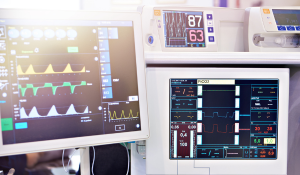The FDA's recent emphasis on cybersecurity for medical devices has highlighted the critical role of Software Bills of Materials (SBOMs) in ensuring safety and compliance. Finite State's Next Generation Platform is uniquely positioned to meet these evolving requirements, especially for medical device SBOMs.
Comprehensive SBOM Solutions
Section 524B(b) of the FD&C Act requires that medical device manufacturers "provide a software bill of materials, including commercial, open-source, and off-the-shelf software components."
As an end-to-end SBOM solution, the Finite State Next Generation Platform excels in SBOM generation, analysis, and distribution. Finite State's binary software composition analysis (SCA) capabilities create SBOMs from scratch and our advanced SBOM Import and Enrichment capabilities can integrate supplier-produced SBOMs within our platform for a fuller picture of your product security posture.
Crucially, this capability aligns with the FDA's new mandate that medical device manufacturers provide detailed SBOMs, including commercial, open-source, and off-the-shelf software components during the premarket submission of cyber devices for FDA approval.
By leveraging Finite State's comprehensive SBOM solutions, manufacturers can effortlessly meet these stringent medical device SBOM requirements.
Advanced Binary Analysis
Section 524B(b) of the FD&C Act requires that medical device manufacturers "design, develop, and maintain processes and procedures to provide a reasonable assurance that the device and related systems are cybersecure."
In line with FDA guidelines, Finite State offers Binary Software Composition Analysis (SCA), Static Application Security Testing (SAST), and Binary Configuration Analysis. These features are vital for ensuring that medical devices are not just compliant, but also secure from potential cyber threats, further strengthening the security aspect of medical device SBOMs.
Finite State's industry-leading binary software composition analysis (SCA) decomposes binary images into their subcomponents while our platform's binary static application security testing (SAST) analyzes decompiled source code from binaries for unsafe function calls that can leave firmware vulnerable to denial of service, privilege escalation, or full system takeover.
Proactive Risk Management
"Section 524B(b) of the FD&C Act requires that medical device manufacturers "design, develop, and maintain processes and procedures to provide a reasonable assurance that the device and related systems are cybersecure, and make available postmarket updates and patches to the device and related systems."
Finite State's platform includes robust risk management tools that ingest and correlate data from 150+ scanners and feeds, giving you full product context that's complemented by the fast integration and seamless interoperability offered through our GQL API and Software Development Kit (SDK) that enables users to pull any data into or out of the Finite State platform.
This aligns with the FDA's requirement for ongoing monitoring and addressing of postmarket cybersecurity vulnerabilities, an essential component for maintaining the integrity of medical device SBOMs.
Compliance and Reporting Made Easy
The Finite State Next Generation Platform can export your device SBOM in CycloneDX or SPDX format to provide evidence for regulatory reporting needs to demonstrate compliance with FDA regulations.
As the FDA now requires detailed cybersecurity information in premarket submissions, including medical device SBOMs, Finite State's reporting tools ensure that manufacturers have all necessary documentation at their fingertips.
Offering flexible deployment models, the Finite State Next Generation Platform supports MDM's regulatory requirements and proudly offers SaaS, hybrid on-premise, and fully air-gapped on-premise installations.
As the FDA continues to enforce stringent cybersecurity regulations, particularly for medical device SBOMs, Finite State's Next Generation Platform stands out as an essential tool for manufacturers. It not only ensures compliance but also enhances the overall security posture of medical devices.
Subscribe to Our Blog
Get the latest posts delivered straight to your inbox weekly.
Share this
You May Also Like
These Related Stories

Fast-Tracking Cybersecurity: What The DoD’s New Rules Mean for Industry Compliance

Getting Audit-Ready with Finite State: A CISO’s Guide to Regulatory Compliance


